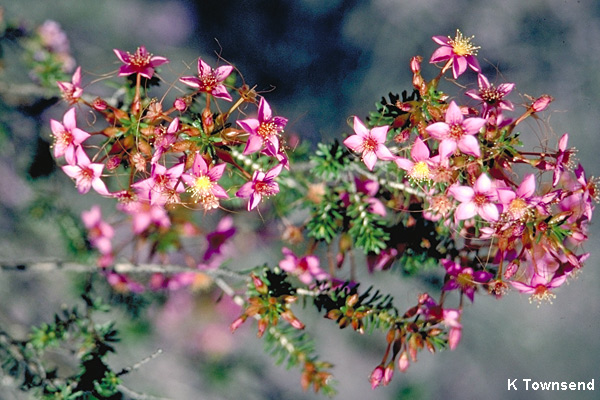General Description:
Calytrix consists of about 75 species, all endemic to Australia with the greatest concentration being in the south-west corner. Most are small to medium shrubs with star-like flowers ranging in colour from white through, yellow, pink and purple to red.
Calytrix brevifolia (previously known as C.muricata) is a small to medium shrub between 0.5 and 2.5 metres high with an erect habit of growth. The leaves are thick but very small, up to 3 mm long. The large, star-shaped flowers are 15 – 20 mm in diameter and are deep pink to magenta in colour with a yellow centre. In common with most Calytrix species, a feature of the flowers is the “awns” or fine hairs which extend from the calyx lobes beyond the petals. Flowering occurs in late winter and spring.
Apart from C.tetragona (fringe myrtle), Calytrix has not received widespread cultivation. Limited experiences with C.brevifolia have indicated that it is difficult to establish in the open ground but some success has been achieved in containers. Like other western Australian species, cultivation of C.brevifolia in humid climates is likely to be difficult.
Propagation of C.brevifolia is best from cuttings as seed can be difficult to germinate. Experimentation into the use of grafting has been carried out with Calytrix species using the closely related genus Darwinia as root stock. Some success has been reported but it is not known whether grafting of C.brevifiolia has been attempted.
For further information on cultivation and propagation of Calytrix, see the article on growing Calytrix on the Geraldton Wax and Relatives page.

Calytrix brevifolia
Photo: Keith Townsend
 Australian Native Plants Society (Australia)
Australian Native Plants Society (Australia)